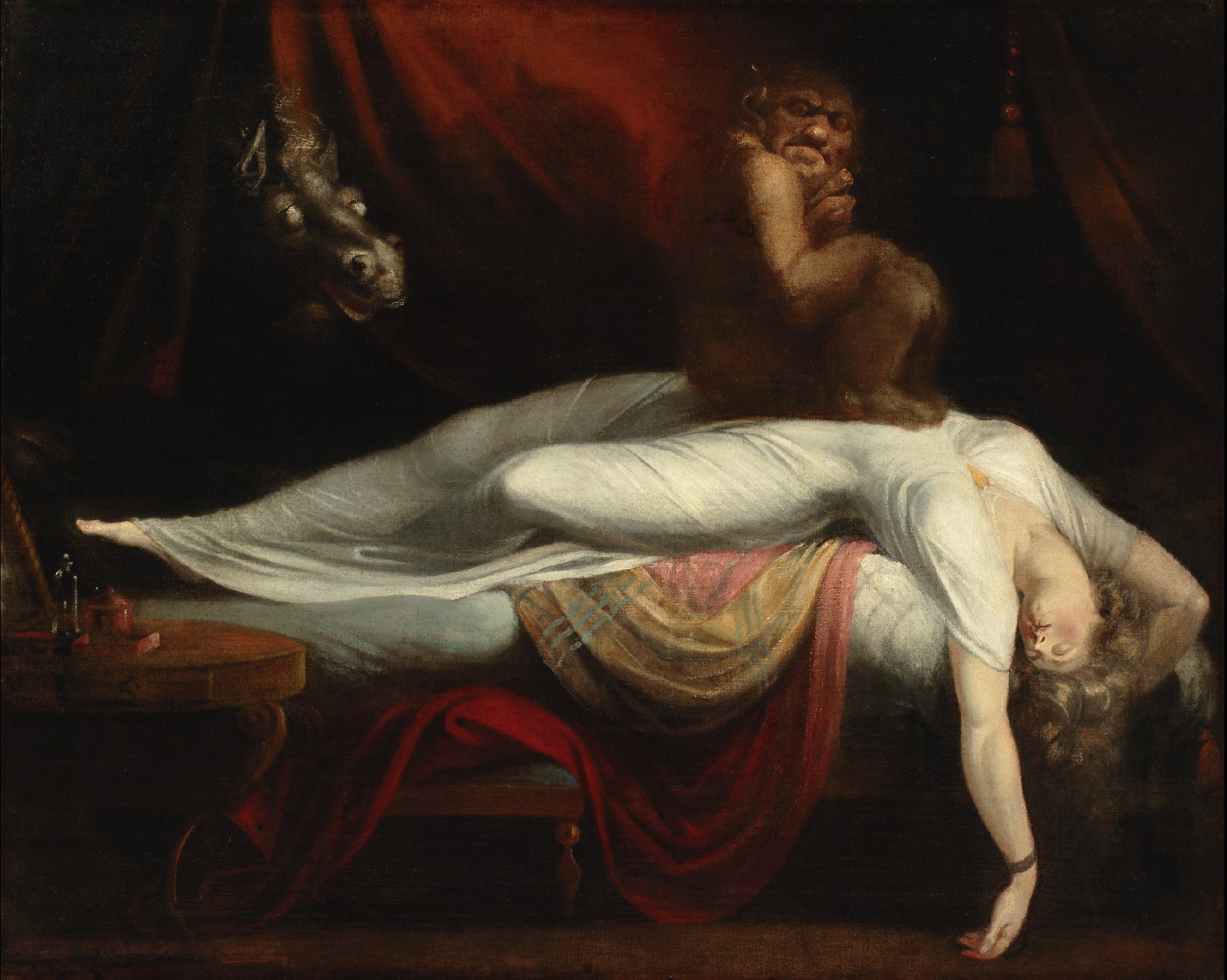 |
| Nightmare – 1781 Oil on Canvas – Henry Fuseli |
Ever since I was invited to be a part of Muddy Colors, I’ve spent a good chunk of time internally debating over what I should write or share and whether or not what I came up with would be worthy of the audience. There are a plethora of topics that could be written about and I plan on visiting as many as I can. However, I’m going to take a departure from the tenor of my previous posts and go out on a limb here to touch on a subject that, although somber, I think is relevant.
The idea was sparked (in addition to some other present, concurrent events) by the recent rewatching of one of my favorite Doctor Who episodes. It’s the one where Doctor Who and his companion, Amy, go back in time to visit Vincent Van Gogh in June of 1890 at Auver-sur-Oise, France, during a turbulent period of the artist’s life just before his suicide. It’s a moving visual experience and I’d recommend it to anyone. In any case, what I watched ruminated inside my head for a couple of days and because of that, my fingers inadvertently decided to do some tap dancing on my computer keyboard. As a result, I ran across a particular article on CNN. It’s title: “The Dark Side of Creativity”.
http://www.cnn.com/2014/01/22/world/the-dark-side-of-creativity-vincent-van-gogh/index.html
 |
| Self-Portrait – 1887 Oil on Canvas – Vincent van Gogh |
It got me to thinking. Now, I know what some of you might say (and I chuckle to myself at this, because I’m just being silly here): “Heather, thinking is a dangerous thing. You shouldn’t do it.” But I was intrigued, and not just because the subject was morose. I started digging. It led to other articles. It led to study. It led to introspection. And no matter what anyone says, I believe introspection is always a good thing—if it leads to positive change.
This is where I’m going to go out on a limb. I think we all have demons. Well, at least that come in some form or another. Okay, so I guess I can’t speak for any of the other phenomenal artists and contributors who post here on Muddy Colors. Maybe they don’t have any. But I know I do. And maybe some of you who come here to visit us do. So here’s the disclaimer: I’m not a psychologist. I wouldn’t give anyone advice or direction where I have no power to do so. I’m only going to throw this stuff out there, pitch in a few of my thoughts (dangerous, I know!) and let you decide what you want to do with it.
So this is where I go back to my thought on demons and everyone having them. I’m not talking about the gargoyle-style demons that perch on the dresser across the room from your bed and give you creepy vibes in the nighttime—although that very well may be the type that haunt you, I don’t know. I’m talking about the ones that take up a very real residence inside our heads and don’t leave us alone. I’ll refrain from covering the ones for which I have no authority to make a statement and knowing that there are also too many to list to even make them a part of this post.
Throughout my career, I’ve met a few demons of my own and they’ve come in various forms. I’ll share just a couple of them, and if one or more of them strikes a chord, perhaps it will lead to your own introspection. I bare myself a bit in this, so be gentle. 🙂
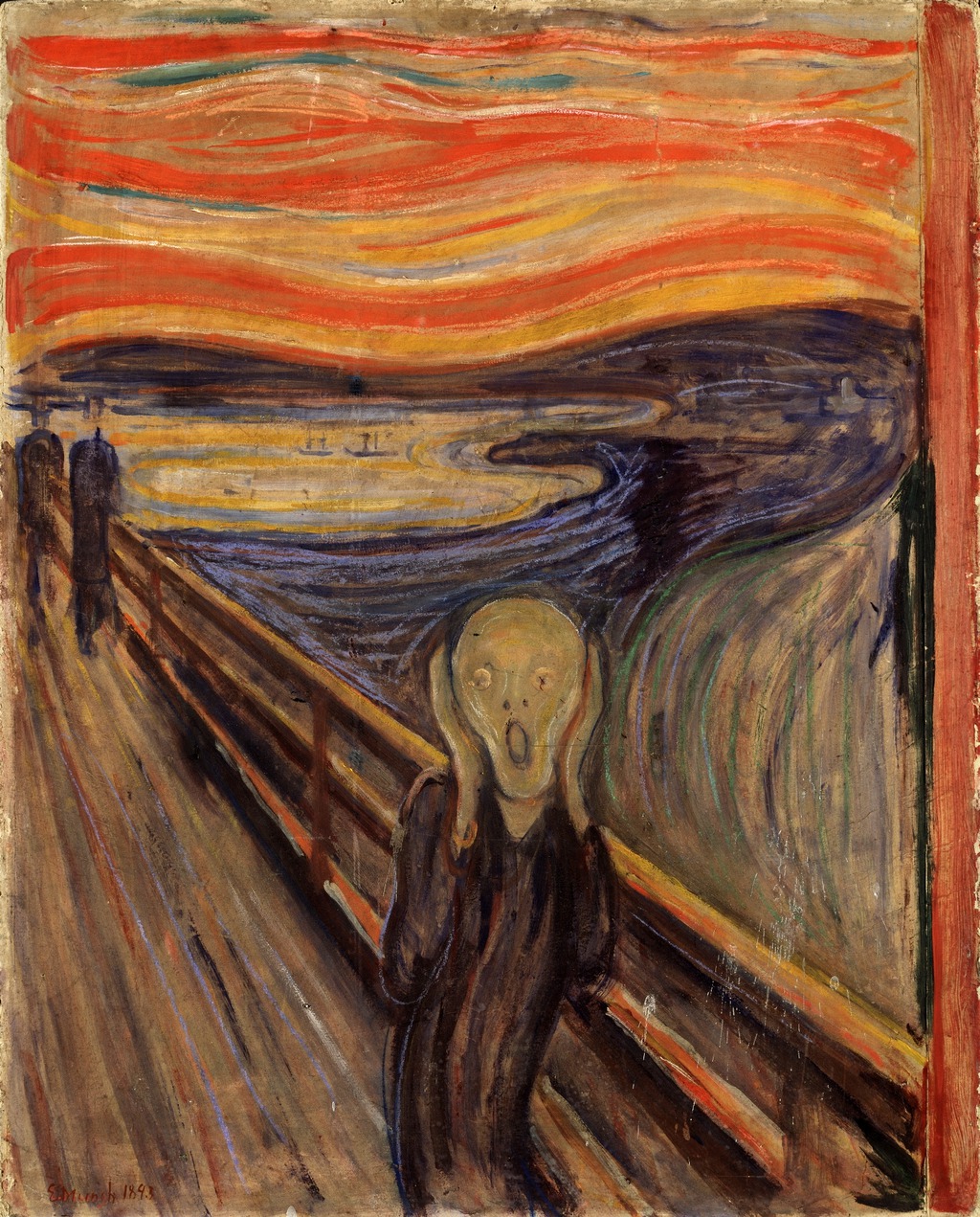 |
| The Scream – 1893 Oil, Tempera and Pastel on Cardboard – Edvard Munch |
One of the first demons to ever crawl on my shoulder and whisper in my ear was the one by the name of Self-Deprecation. Even during my childhood and then into adulthood, I felt I’d had a pretty good grasp on art technique and creativity and I was occasionally complimented on it. That felt good to hear, of course, but the Demon of Self-Deprecation is a vicious one. He sat on my shoulder and reminded me that no matter what anyone else thought, I’d never be as good as the Great Masters I admired (both ancient and modern). I’d never be able to attain the kind of creativity, quality and far-reaching influence that they did. According to Self-Deprecation, I would always and forever be a hobby artist. I’d never have a real career or find success in it financially or perhaps even find any true fulfillment in the creative process because of this. I’d find joy in creating images and then within moments of finishing a piece, Self-Deprecation would remind me that it wasn’t as good as something else I’d seen. He was a beast and difficult to be rid of.
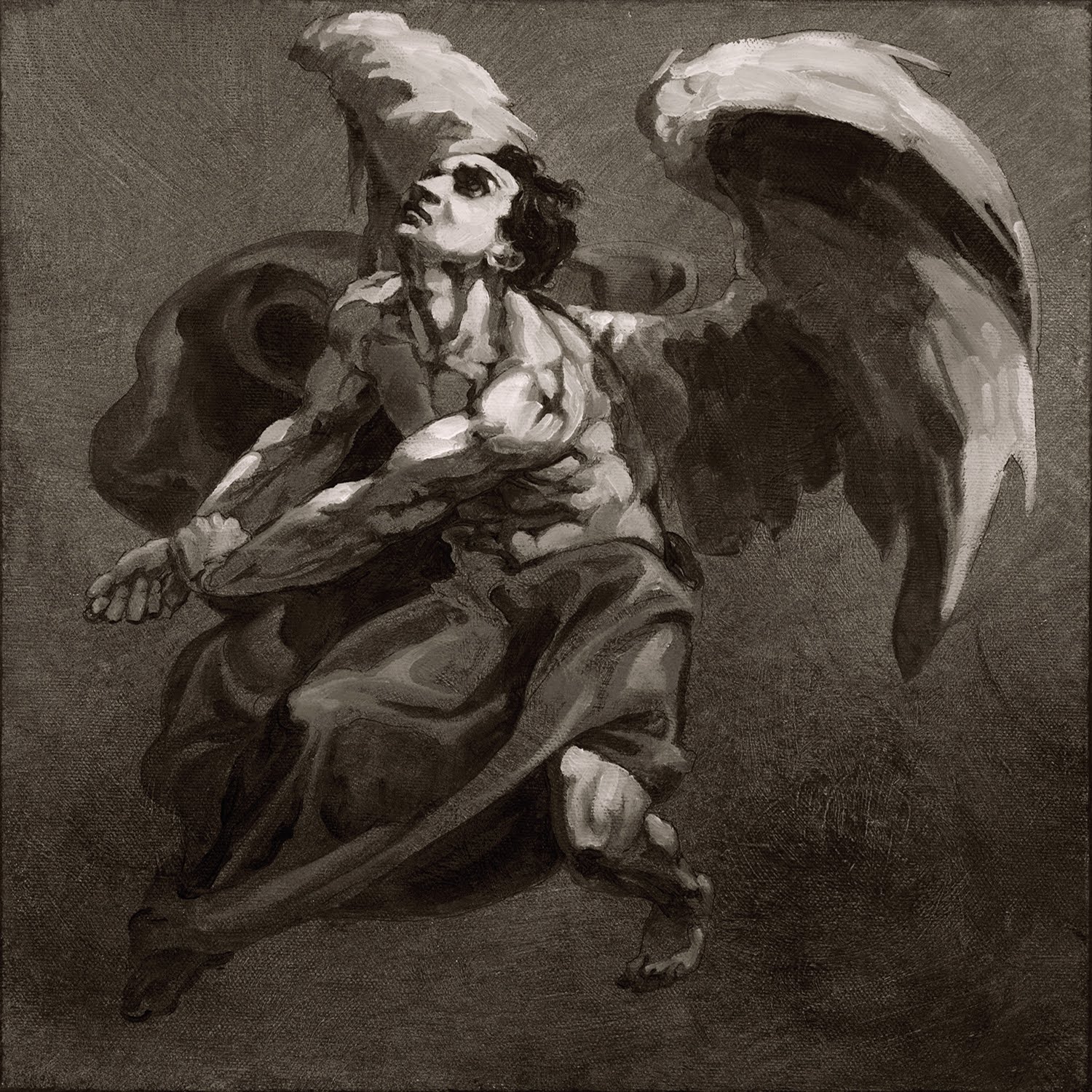 |
|
|
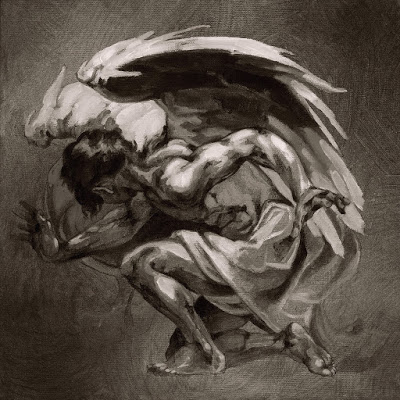 |
| Bound II – 2005 Oil on Canvas Study – Heather Theurer |
It wasn’t long after Self-Deprecation took up residence, that his twin sister decided to join him. Her name is Self-Doubt. She took everything Self-Deprecation flaunted and magnified it across every area of my life. If Self-Deprecation could convince me that my art wasn’t good enough, then certainly, she could do much better and persuade me to keep my art to myself. Unlike her twin brother, she didn’t whisper; she was bold and in my face, letting me know that my art wasn’t worthy of selling. I also didn’t have a formal art education, she reminded me, and that meant I didn’t know what I was doing. I was a “fake” and perhaps even a “cheat”. So sitting at a table for my first years at San Diego Comic-Con turned into five-day stretches of torture wondering why in the world I was there (which springs back to my first post on Muddy Colors). Having her on my shoulder led to uncertainty and indecision. I wondered if I was selfishly taking away from my family (I have five kids) to make stuff that nobody cared about. I struggled with the idea of investing in my art financially, especially if seeing a positive end come out of it was not clearly in view. This dragged on for a long time and was seriously frustrating because there was a part of me that didn’t want to believe all of her lies. With these twins sitting on my shoulders, it was hard not to imagine that the only reason anyone bought my art was because they were either related to me and therefore obligated to show support or that they pitied the “little guys” at Comic-Con and felt the need to fulfill an urge to be charitable. The Demon of Self-Doubt didn’t stop there, though. Doubting myself because I hadn’t yet achieved a grand goal I had set for myself was a rather natural response and one relatively easily remedied with time and experience. No, Self-Doubt dug a little deeper. She took the heart of what I did and attempted to blacken it. I’d always loved creating art. It was a part of me, kind of like breathing. But I didn’t know why that was, specifically; I just did it. Self-Doubt tried to convince me to doubt every brush stroke and its purpose. It was like convincing me that breathing wasn’t important, one inhalation at a time. It took everything out of me and it became a battle to continue.
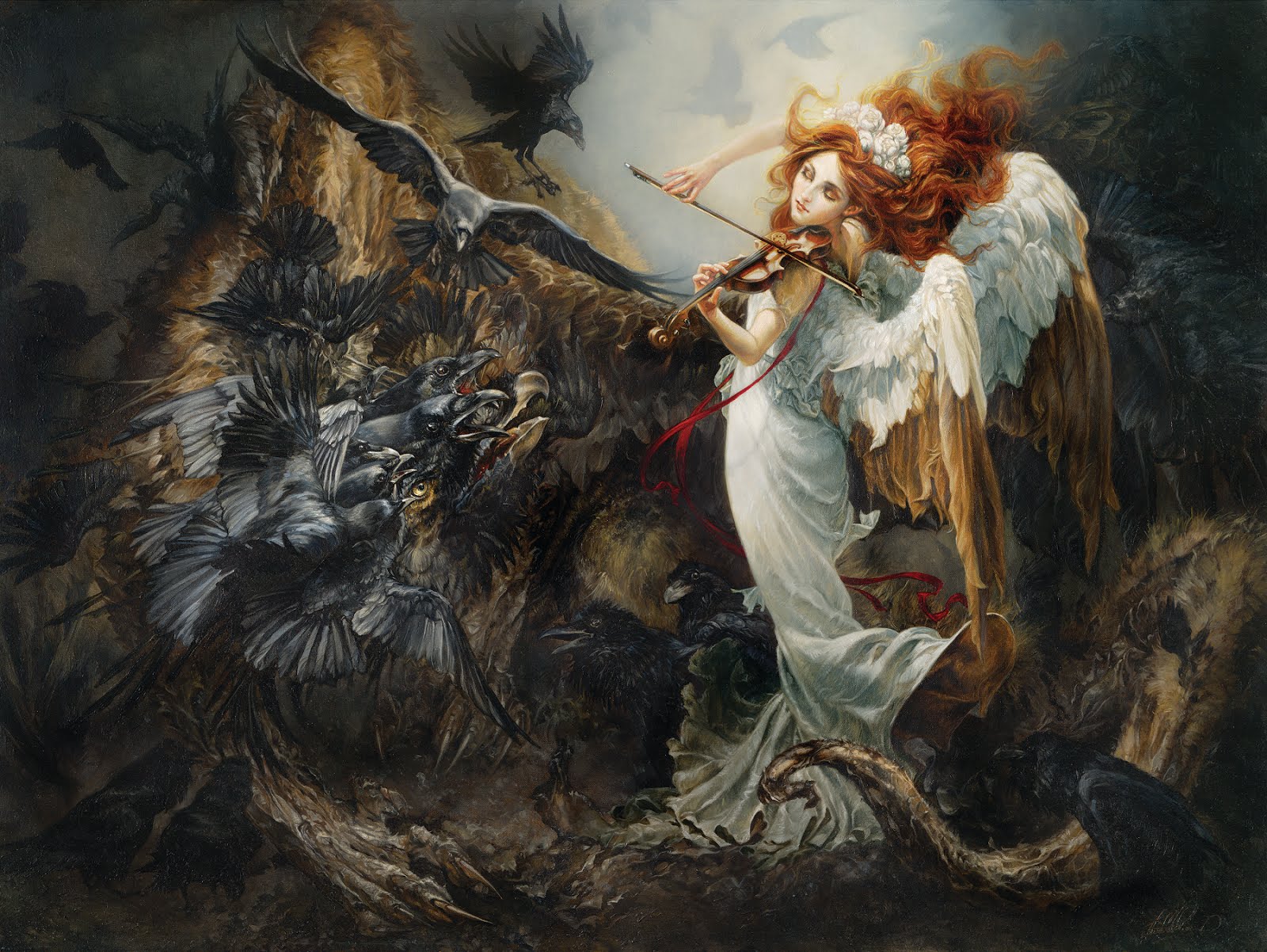 |
| Saraigh Ceol – 2012 Oil on Canvas – Heather Theurer |
Then there are the demons that rear up in front of us and bare their fangs in all the ferocity of a grizzly on a rampage because you’ve stolen the last salmon in the river. These guys don’t sit on your shoulder. They attack head-on and make it seem as if all the powers of Earth and Hell are combining to destroy us and everything we do. Death, illness, tragedy, economic trials, emotionally/physically abusive relationships—they all have a way of finding their way into our lives to some degree. I’m not going to dwell on the particulars here. You all know what your personal demons are and what face they take.
Instead, I’m going to step back and bring this all together. Maybe this is the unrealistically optimistic side of me—because I tend to lean in that direction—but, barring serious mental illnesses or addictions (which I mentioned I’d refrain from crossing over into, for the sake of lack of expertise), I believe that none of these demons—and I do mean none of them—have any real power. None whatsoever. They only have power as we give it to them. In hindsight, I can see points where I pretty much handed over my life to the demons that sat on my shoulder and demanded it of me, which is kind of sad to admit. However, I think I’ve experienced enough of life now to realize that I not only didn’t need to do that, but that I won’t be doing it again. For some of you who feel you’re right smack dab in the middle of Demon Central, you might be, in addition to scoffing at me, asking how in the world I plan on accomplishing that. Demon Central is a bleak place to be, after all, and one with a daunting city wall.
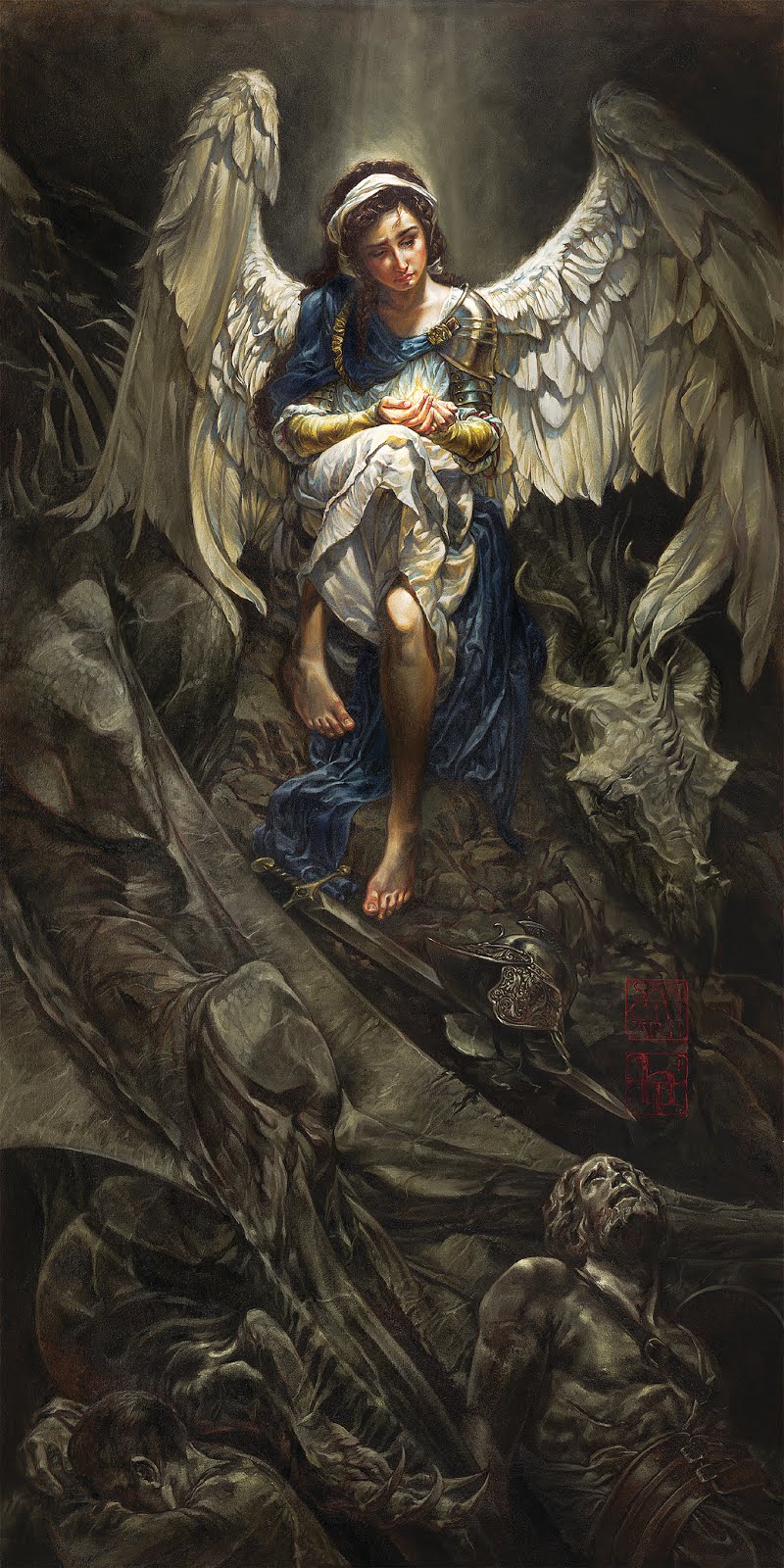 |
| Santuarii – 2011 Oil on Canvas – Heather Theurer |
Well, it’s definitely more than just attitude, I’ll tell you that much, although that is at the root of it all. If you find yourself in the downward spiral of pessimism, no amount of effort is going to free you from the demons who climb on your back and tell you what to do. What shed the demons that I faced in my past came down to putting up my dukes and just doing. To begin with, I had to acknowledge that the deceitful little buggers of Self-Deprecation and Self-Doubt were actually sitting on my shoulders. They have the ability to hide well, blend in, and appear insignificant. Now that I know what they look like, I can avoid them. I pluck them off and flick them away before they can get their dirty claws into me. I plow forward in my art with the kind of determination and speed that makes it hard for the demons to catch up. Creating artwork is no longer an end result but a process. If I can see that I’m not where I want to be right now, at least I’m approaching it, moving toward it. Sometimes that happens in big leaps, but most of the time it comes in slow, trudging, tiny steps. I don’t think I’m unique in this regard. I’d place a hefty bet that most artists out there are taking the slow and steady route with their noses to the ground searching out the best path to take. That’s probably wise and beneficial, so long as you’re aware of who your companions are.
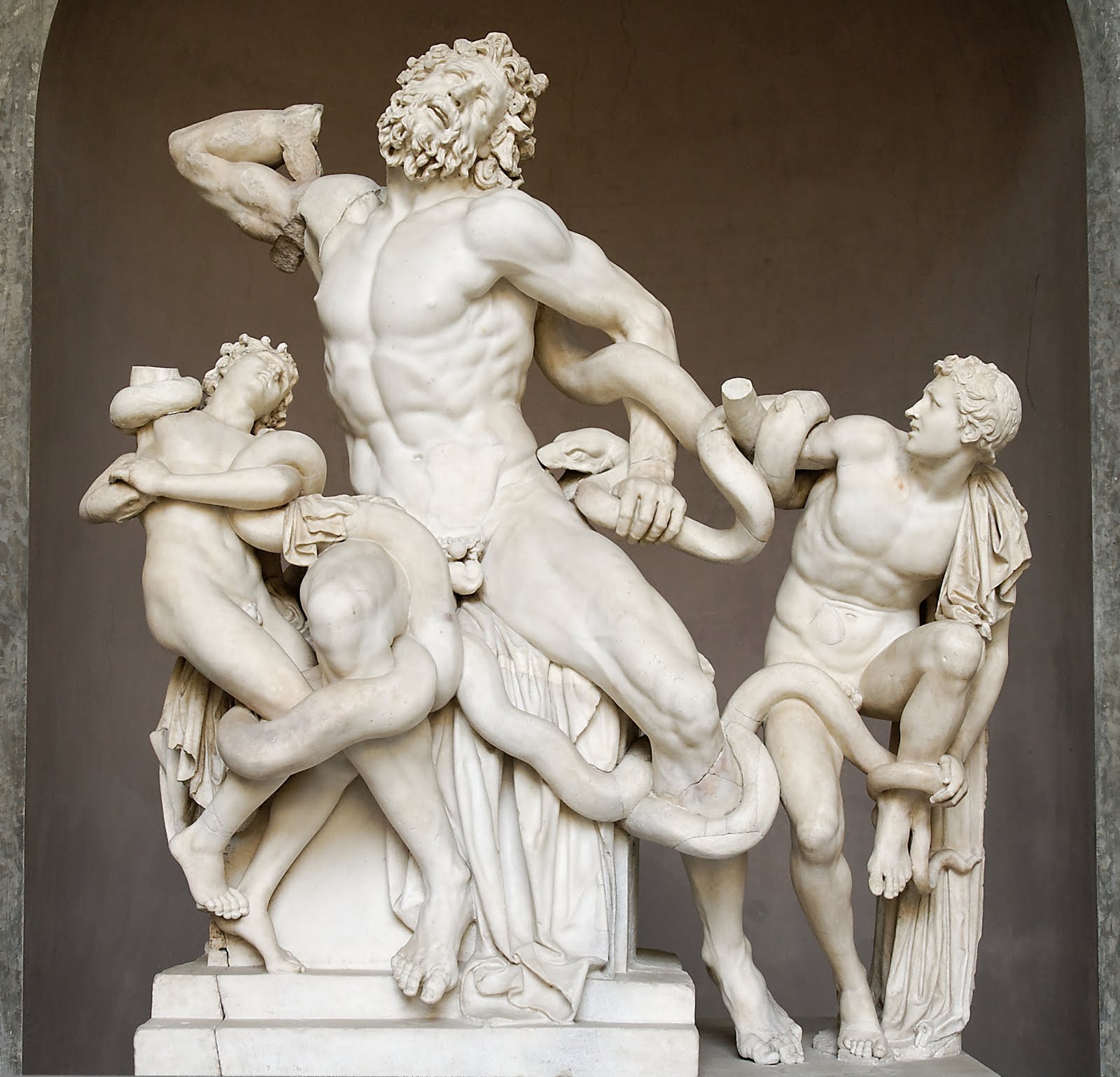 |
| Gruppo del Laocoonte – Marble Sculpture |
The same could be said of the demons that I have no control over—the grizzly bear kind. Crazy thing is, that out of every one of those types of experiences I’ve gone through, something grand has been added to my creative core. They’ve changed my work for the better by challenging not only my skills but the substance of the art itself. Perhaps these demons didn’t appreciate it, but I dismantled them, took their base elements and then rebuilt them into something that I could call my own and hopefully uplift others with. This didn’t happen spontaneously, folks. It took focus, vision, and ridiculous amounts of effort. It was sometimes a tedious and painful method of creating and living. With that as a setting in which to launch the future, though, I don’t fear the demons anymore.


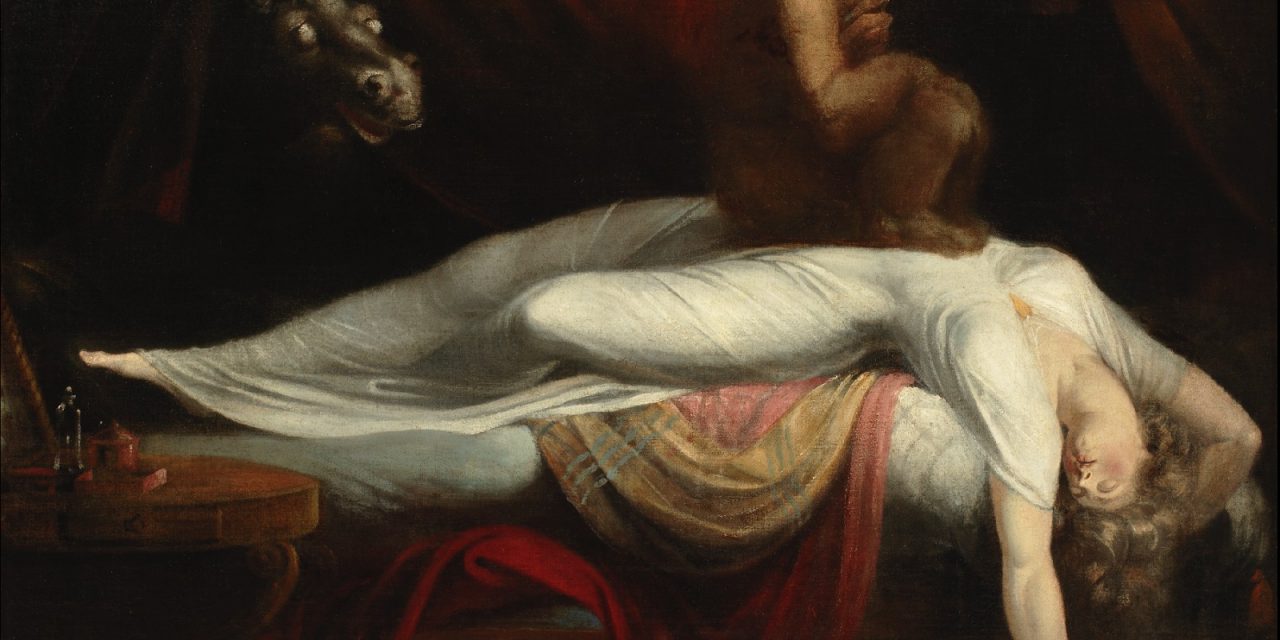
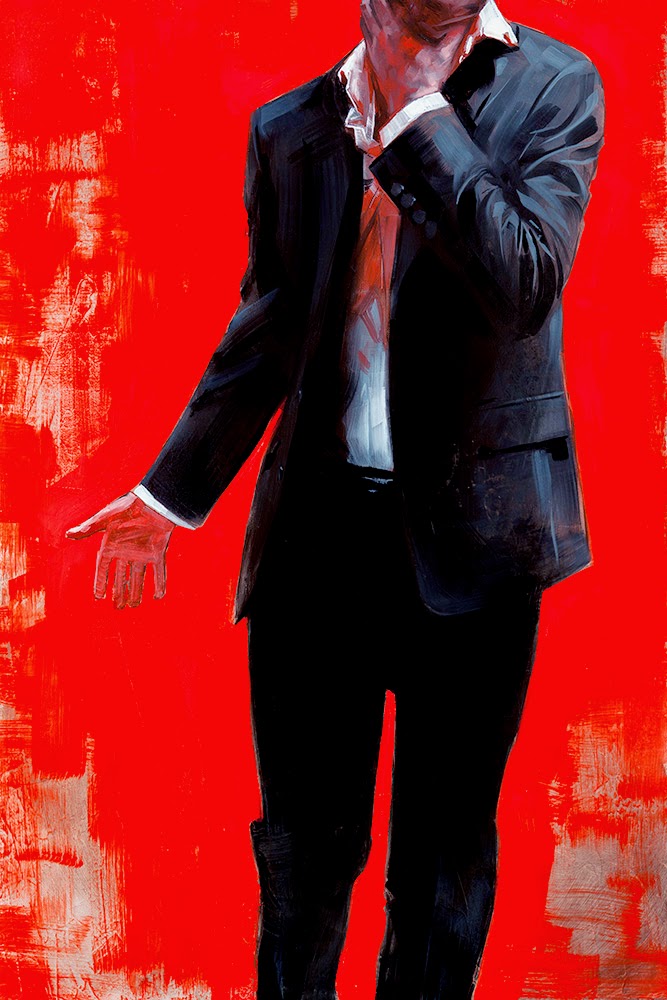


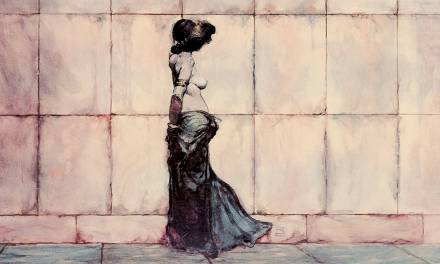
⭐️⭐️⭐️⭐️⭐️
Heather, I have been a long reader on muddy colors and I never really engaged in the comment section but I wanted you to know this was a beautiful article, especially moreso because of what I am going through right now. This cut me down to the bone. Thank you for sharing your feelings, I can't believe you were even hesitant to post this. I guess these demons really do plague all artists and even all time periods… makes me feel like they are impossible to escape. You are awesome and your art is awesome and this article was awesome and I am so glad you are a contributor now!
Fantastic article. People talk about the process of creating their art and how to improve the work, but never have a read an article addressing what fellow artists go through emotionally.
Like yourself I can suffer from those two demons on my shoulder and your words have inspired me to “put my dukes” too and just carry on creating. I know with hard work I'll find the path I need to take.
Thank you.
Thank you for this article. I've read a few books that address this recently. I'd recommend “Do the Work” by Steven Pressfield, which is a short read, and he addresses what he calls the resistance, a force which keeps many creatives from doing the work they want to do. Seth Godin also talks about this when discussing anyone creating art, and how important it is that we over come this, and do the work we are called to do.
Thank you! Thank you! THANK YOU for this…I've printed this out and will read it to myself every time self doubt creeps my way…
Dee Groberg
“THE RACE”
“Quit! Give up! You’re beaten!” they shout at me, and plead.
“There’s just too much against you now, this time you can’t succeed.”
And as I start to hang my head in front of failure’s face,
My downward fall is broken by the memory of a race.
And hope refills my weakened will, as I recall that scene,
For just the thought of that short race rejuvenates my being.
They all lined up so full of hope, each thought to win that race.
Or tie for first, or if not that, at least take second place.
And fathers watched from off the side, each cheering for his son,
And each boy hoped to show his dad, that he would be the one.
The whistle blew, and off they went, young hearts and hopes afire,
To win and be the hero there was each young boy’s desire.
And one boy in particular, whose dad was in the crowd,
Was running near the head, and thought, “My dad will be so proud!”
But as he fell, his dad stood up, and showed his anxious face,
Which to the boy so clearly said, “Get up and win the race.”
He quickly rose, no damage done, behind a bit, that’s all,
And ran with all his mind and might to make up for his fall.
So anxious to restore himself, to catch up and to win,
His mind went faster than his legs; he slipped and fell again!
He wished then he had quit before with only one disgrace.
“I’m hopeless as a runner now, I shouldn’t try to race.”
But in the laughing crowd he searched, and found his father’s face,
that steady look that said again, “Get up and win the race!”
So up he jumped to try again, ten yards behind the last,
“If I’m to gain those yards,” he thought, “I’ve got to move real fast.”
Exceeding everything he had he gained back eight or ten,
But trying so to catch the lead, he slipped and fell again.
Defeat! He lay there silently, a tear dropped from his eye.
“There is no sense in running more. Three strikes, I’m out, why try?”
The will to rise had disappeared, all hope had fled away.
So far behind, so error prone, a loser all the way.
“I’ve lost, so what’s the use,” he thought, “I’ll live with my disgrace.”
But then he thought about his dad, who soon he’d have to face.
“Get up!” an echo sounded low, “Get up, and take your place.
You were not meant for failure here, get up and win the race.”
“With borrowed will get up,” it said, “You have not lost at all.
For winning is no more than this: to rise each time you fall.”
So up he rose to run once more, and with a new commit,
He resolved that win or lose, at least he wouldn’t quit.
So far behind the others now, the most he’d ever been,
Still he gave it all he had, and ran as though to win.
Three times he’d fallen stumbling, three times he’d rose again,
Too far behind to hope to win he still ran to the end.
They cheered the winning runner, as he crossed the line first place.
Head high and proud and happy, no falling, no disgrace.
But when the fallen youngster crossed the finish line last place,
The crowd gave him the greater cheer for finishing the race.
And even though he came in last, with head bowed low, unproud,
You would have thought he won the race to listen to the crowd.
And to his dad, he sadly said, “I didn’t do so well.”
“To me you won!” his father said, “You rose each time you fell.”
And when things seem dark and hard, and difficult to face,
The memory of that little boy helps me to win my race.
For all of life is like that race, with ups and downs and all,
And all you have to do to win is rise each time you fall.
“Quit! Give up! You’re beaten!” they still shout in my face.
But another voice within me says: “GET UP AND WIN THE RACE!”
What a wonderful poem–thank you for including it!